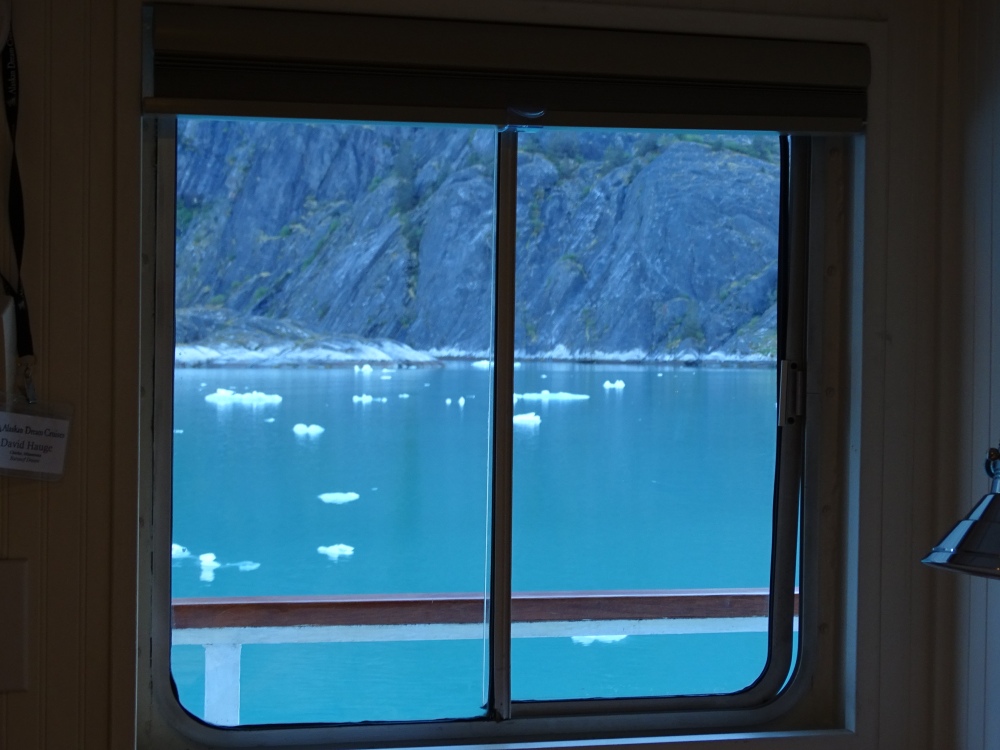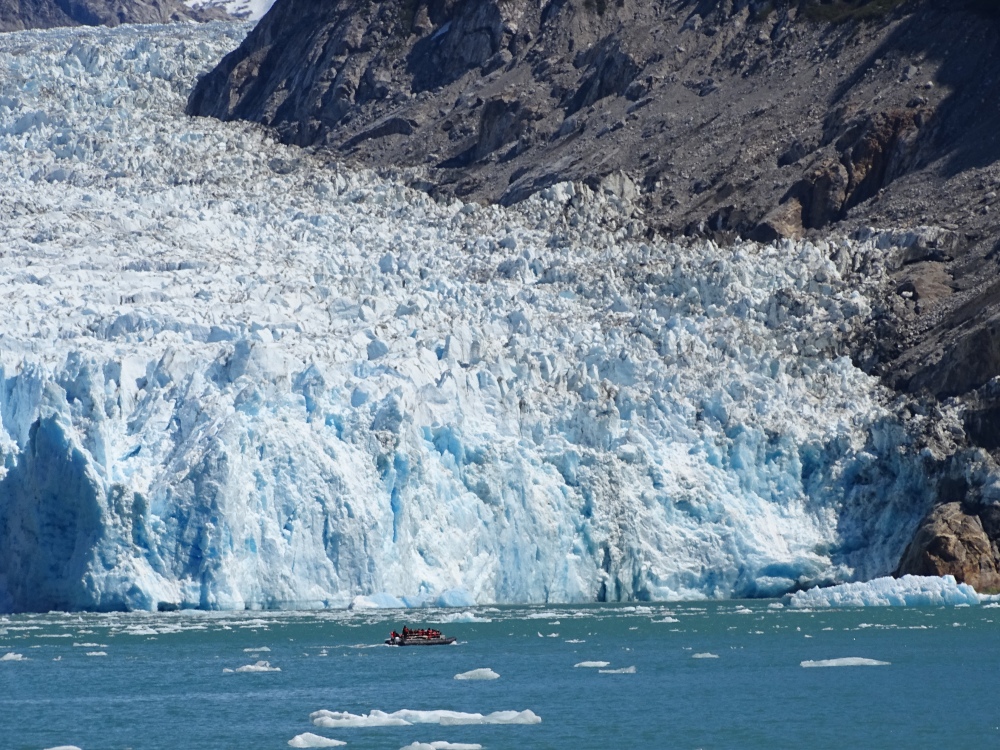Endicott Arm and Dawes Glacier
We awoke this morning to find small icebergs (the crew called them bergy bits) floating past our window. We were navigating the emerald colored waters of Endicott Arm, the result of the freshwater run-off from the glaciers mixing with saltwater. It is stunning.

This and other fjords were carved by glaciers, its rocky cliffs polished smooth by grinding ice. Waterfalls were abundant.
At the end of Endicott Arm is Dawes Glacier, a tidewater glacier with a face 250 feet high. We spent several hours at this location and were able to witness the glacier calve. The roar of an enormous piece of ice dropping several stories into the water was impressive. As you stand and watch and listen you notice the near constant cracking and rumbling sounds of the glacier. The Tlingit call this “white thunder,” the voice of glacial ice.
Safety regulations required we stay at least 1/4 mile from the face of the glacier, avoiding ice missiles from calving as well as shooters. Shooters are large pieces of a glacier that break away from below the water and come shooting to the water’s surface with no warning. We did not witness any shooters, but over the course of our week we did notice ice bergs turning. We all know the vast majority of an iceberg mass is under the surface of the water. The salt water and currents eventually erode and shrink the ice under the surface. Gravity will then work to bring most of the berg’s weight beneath the water’s surface.
The ice here is both beautiful and impressive. The color often reveals its makeup; dense bergs are blue while those filled with trapped air bubbles are white.
There were DIB excursions on this day, allowing us up close and personal views of the fjord.

I spotted a pair of arctic terns but wasn’t fast enough to get a picture. An arctic tern is famous for its migration. It flies from its Arctic breeding grounds to the Antarctic and back again each year. We also saw a number of harbor seals, swimming and then resting on small icebergs.
Two separate contests rounded out our day. The first was to guess the exact date and time a captured bergie bit would melt. The second was a rousing game of Alaskan trivia. In case you were wondering, the bergie bit melted in something slightly more than 48 hours.

















